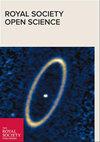驯化、野化和经验依赖性可塑性如何影响褐马鸡大脑大小的变化?
IF 2.9
3区 综合性期刊
Q1 MULTIDISCIPLINARY SCIENCES
引用次数: 0
摘要
在家养物种中,猪的脑体积缩小幅度最大,但这种缩小的程度和因素仍不清楚。在这里,我们利用从野生、圈养、野化和家养苏门答腊猪的 92 个成年头骨中收集到的脑内积,探讨了驯化、野化和圈养对该物种脑体积变化的影响。我们发现,在24个月的时间里,脑容量持续增长,而从第20个月开始,身体的增长速度放缓。我们观察到野猪和猪的脑容量减少了 18%,这与之前提到的减少 30%-40% 的说法不同。我们没有发现脑容量有明显的性别差异,这驳斥了通过选择减少雄性攻击性来削弱雄性第二性征的理论。澳大利亚的野化导致脑体积缩小--这可能是为了适应食物匮乏和干旱,反驳了向野生祖先脑体积逆转的理论。最后,在人工饲养条件下自由出生的野猪的脑容量略有增加,这可能是由于持续和高质量的食物供应以及新的同种特异性相互作用。这些结果支持了进一步探索动物驯化过程中饮食、环境和经验对脑部大小进化的影响的必要性。本文章由计算机程序翻译,如有差异,请以英文原文为准。
How domestication, feralization and experience-dependent plasticity affect brain size variation in Sus scrofa.
Among domestic species, pigs experienced the greatest brain size reduction, but the extent and factors of this reduction remain unclear. Here, we used the brain endocast volume collected from 92 adult skulls of wild, captive, feral and domestic Sus scrofa to explore the effects of domestication, feralization and captivity over the brain size variation of this species. We found a constant brain volume increase over 24 months, while body growth slowed down from month 20. We observed an 18% brain size reduction between wild boars and pigs, disagreeing with the 30%-40% reduction previously mentioned. We did not find significant sexual differences in brain volume, refuting the theory of the attenuation of male secondary sexual characteristics through the selection for reduced male aggression. Feralization in Australia led to brain size reduction-probably as an adaptation to food scarcity and drought, refuting the reversal to wild ancestral brain size. Finally, free-born wild boars raised in captivity showed a slight increase in brain size, potentially due to a constant and high-quality food supply as well as new allospecific interactions. These results support the need to further explore the influence of diet, environment and experience on brain size evolution during animal domestication.
求助全文
通过发布文献求助,成功后即可免费获取论文全文。
去求助
来源期刊

Royal Society Open Science
Multidisciplinary-Multidisciplinary
CiteScore
6.00
自引率
0.00%
发文量
508
审稿时长
14 weeks
期刊介绍:
Royal Society Open Science is a new open journal publishing high-quality original research across the entire range of science on the basis of objective peer-review.
The journal covers the entire range of science and mathematics and will allow the Society to publish all the high-quality work it receives without the usual restrictions on scope, length or impact.
 求助内容:
求助内容: 应助结果提醒方式:
应助结果提醒方式:


